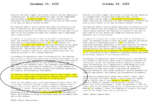Summary
ADP and Non-Manufacturing ISM lend credence to our fear of a disappointing national jobs report.
Economists estimate only a small part of the manufacturing jobs loss can be traced to trade policy.
19 states increased min wage at the start of the year, but the impact on the nation’s average weekly earnings will likely be too small to detect.
We have suggested the risk of disappointment with the US December jobs data. There is not a tight fit on a monthly basis between the ADP estimate, and the first estimate of the BLS, the disappointment with the ADP estimate (153k vs. median estimate of 175k and an upwardly revised 215k in November) lends a modicum of support to our warning. Similarly the weakness in the employment component of the ISM non-manufacturing survey (53.8 vs. 58.2) is also consistent with our warning.
| Recall that in December 2015, ADP estimated the US private sector added 303.5k jobs (vs. the official estimate of 271k). Separately, the Challenger US jobs cut announcements spiked to 42.4% (year-over-year). This is the first increase since April and the largest since September 2015. |
U.S. ADP Nonfarm Employment Change, December 2016(see more posts on U.S. ADP Nonfarm Employment Change, )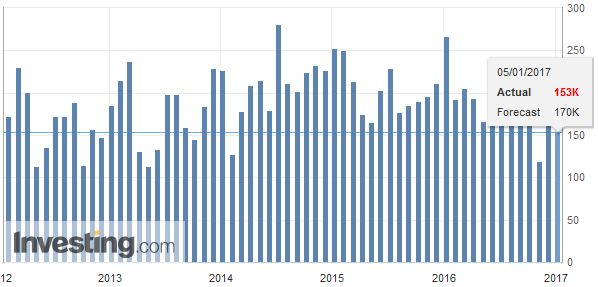 Source: Investing.com - Click to enlarge |
| We suspect there may be a seasonal problem with the December non-farm payroll estimate. The last three Decembers have seen weaker job growth than November. This has been the pattern in seven of the past 10 years. If one flips a coin three times in a row, and it lands on tails each time, you would not conclude the coin is flawed. If flipped the coin ten times and its was heads each time, you would not conclude the coin is flawed. Back of the envelope calculations suggest there is an 11% probability that there is a genuine pattern here. |
U.S. Nonfarm Payrolls, December 2016(see more posts on U.S. Nonfarm Payrolls, )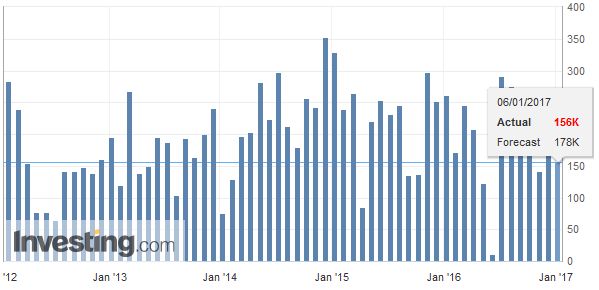 Source: Investing.com - Click to enlarge |
| Separate from the net jobs created, there are a few other elements of the report that are important for investors and economists. The unemployment rate, which may tick up to 4.7% from 4.6%, is well covered in the media, but, as many have learned, it can be misleading if not taken in conjunction with the participation rate (62.7% in November). The underemployment rate fell to 9.3% from 9.5% October. This is one area that the ongoing slack in the labor market is still evident. |
U.S. Unemployment Rate, December 2016(see more posts on U.S. Unemployment Rate, )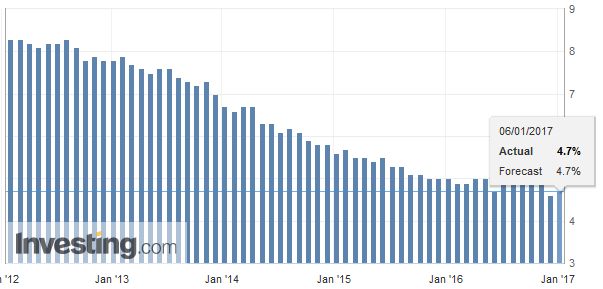 Source: Investing.com - Click to enlarge |
| We argue that from the Fed’s vantage point, hourly earnings may be more important than the net job creation, barring a shock. Headline inflation converges to core inflation and core inflation has traditionally converged to wage growth. The median estimate has average hourly earnings up 0.3% in December, which would bring the year-over-year rate back to its cyclical high of 2.8%. |
U.S. Average Hourly Earnings, December 2016(see more posts on U.S. Average Earnings, )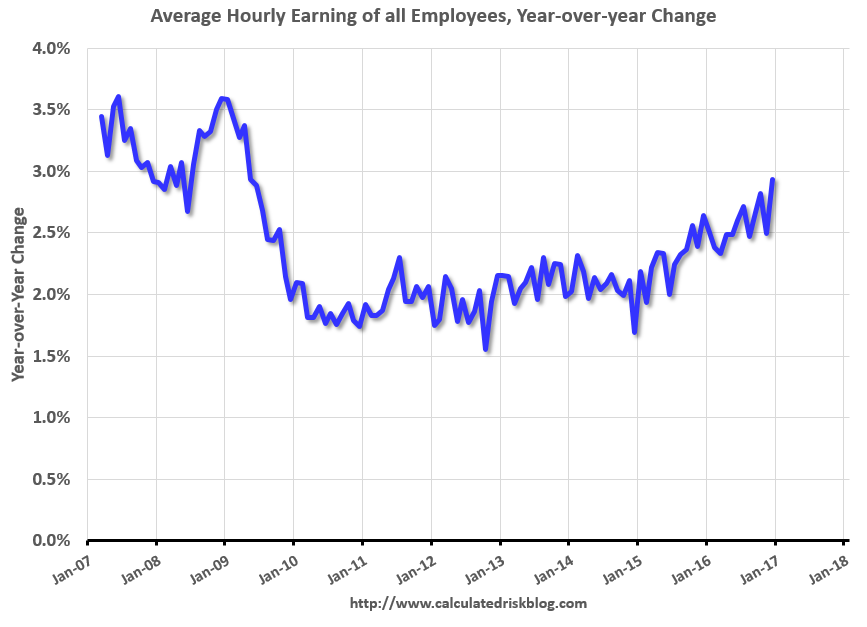 Source: macro.economicblogs.org - Click to enlarge |
| ADP estimates that the US lost about 16k manufacturing jobs. On average, the US has lost 5k manufacturing jobs a month this year after gaining an average of two thousand a month in 2015 and 17k in 2014. The incoming administration has talked a great deal about manufacturing jobs, which currently account for about 8.5% of non-farm payrolls. This is down from about 25% in 1970 and nearly 33% in 1940.
What is happening to manufacture workers happened to agriculture worker more than 100 years ago. It is also happening to many service sector employees and, perhaps in the coming years, drivers of all kinds. The farm jobs were not outsourced or exported. Mechanization was the real culprit. A widely cited academic paper concluded that due to trade policy the US lost nearly one million manufacturing jobs between 1999 and 2011. This is less than one-fifth of the manufacturing jobs lost over that period. Another factor that few consider is the changing definitions. A custodial engineer who looks after an auto plant, for example, is in manufacturing. However, if the function is outsourced to a maintenance company, the job is now in the service sector. Lastly, we note that so countries, including China, who have been accused of “stealing” American manufacturing jobs, are also losing manufacturing jobs. |
U.S. Underemployment (U6), December 2016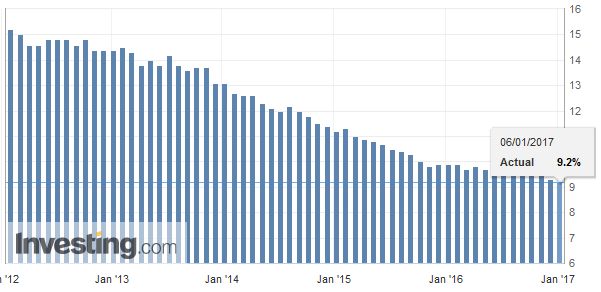 Source: Investing.com - Click to enlarge |
A record 19 states raised the minimum wage at the start of the year (Oregon, Maryland, and Washington, D.C. will do so later). The increases vary. Consider New York. In New York City, the minimum wage is now $11, but in the downstate suburbs, it is $10 and $9.70 elsewhere. The biggest jump is Arizona. The $1.95 an hour increase brings the state’s minimum wage to $10. Roughly one in eight workers will be impacted in Arizona. Massachusetts’ minimum wage went up $1 to $11, and roughly 290k workers are directly impacted. The minimum wage in California went up 50 cents (to $10.50) and impacts 1.7 mln workers directly.
The left-of-center Economic Policy Institute estimates that some 4.3 mln American workers will likely see a wage increase due to the minimum wage increases. However, there are more than 152 mln employees in the US. The hike in the minimum wage is unlikely to be detectable in the month’s average earnings data. A couple of years ago, the non-partisan Congressional Budget Office noted that a rise in the federal minimum wage to $10.10 (from $7.25 set in 2009 and currently prevails) would “cost” 500k jobs, but boost the pay of 16.5 mln workers whose pay is tied to the minimum wage.
Full story here Are you the author? Previous post See more for Next post
Tags: #USD,jobs,newslettersent,U.S. ADP Nonfarm Employment Change,U.S. Average Earnings,U.S. Nonfarm Payrolls,U.S. Unemployment Rate,wages

















